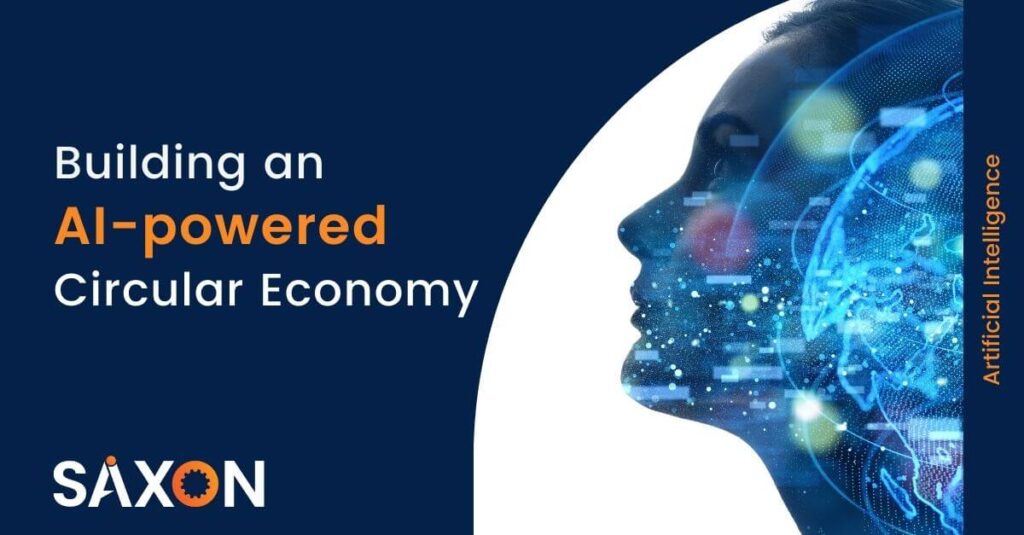Over the last 100 years, large-scale manufacturing gained momentum, and consumerism worldwide grew leaps and bounds, thereby resulting in more waste, impacting the ecological balance in more than one way. This means municipalities and local corporations have to spend a substantial part of their budget on solid-waste management. But addressing a problem with exponential growth demands an innovative solution and the employment of the latest technologies to deliver efficient, low-cost approaches. New technologies offer faster and agile learning processes with iterative designing, prototyping, and feedback cycles.
Artificial intelligence (AI) can play a defining role in enabling this systemic shift. AI is the fundamental driver of the Fourth Industrial Revolution, which uses models and systems that mimic human intelligence functions such as reasoning and learning. The power of AI is that it allows us to learn faster from feedback, address any complex problem effectively, and derive actionable insights from data. A growing number of experiments are being conducted to apply AI can accelerate the transition to a circular economy. The three governing principles of circular economy are to keep out design waste and pollution; produce and retain products and materials at their highest value, and regenerate natural systems.
AI provides the capability for AI-Powered Circular Economy innovation to take place across many industries in three ways:
Product design, prototype, and testing
When you design for circularity, you have to design the products and select components and materials that can be conducive for disassembly, upgrade, and recycling. Added to this complexity of the design considerations, we have a broad choice of materials, manufacturing techniques, and design options. AI and ML-assisted design can accelerate this complex process through rapid prototyping, testing, and feedback to improve the overall product offering, lead times, and product development cost.
Develop new circular business models
In the last decade, we have witnessed and participated in several circular economy models such as asset sharing or product as a service. As we have become comfortable with sharing cars and bikes, we may develop higher comfort factors; several other industries are ripe for disruption by introducing circular business models. The development of circular business models that can offer a compelling alternative to the existing linear models demands the cohesive working of all functions such as design, development, production, sales, marketing, pricing, customer support, and reverse logistics unified by circular economy principles.
Effective advancement and adoption of shared economy models in many industries require a robust, dependable infrastructure for handling reverse logistics and remanufacturing. AI as technology lends the technology strength for this. AI uses Real-time insights and historical behavioral data from products and users to predict demand and pricing curves. It also serves well to increase product circulation and asset utilization. Further, AI empowers manufacturers to offer better predictive maintenance for large machinery and adopt more innovative inventory management techniques.
Optimize Circular Infrastructure
A vital feature of a circular economy is that materials and products are repeatedly used rather than the widespread use and throw model. Hence the products naturally require the feature of reusability, repairability, remanufacturing, and recycling capability. It becomes challenging when we are looking at reclaiming the nutrients from biological waste streams as collecting, sorting, separating, and treating this for redistribution is laborious and expensive. Similarly, winning back the material from used computers is tricky as the waste streams are mixed and heterogeneous. Suppose we can build an effective channel that allows a homogeneous flow of material and products. In that case, our recovery levels improve exponentially, and we can efficiently sort the components that can be put to reuse or remanufacture.
AI-assisted reverse logistics brings process improvements to material handling, sorting and disassembly of products, recycling materials, and remanufactured components.
For an AI-powered circular economy to succeed and organizations to use it as a reliable business model, it requires the commitment of all stakeholders. The following examples here can inspire different industries and their leaders to explore further in this direction.
- Manufacturing design teams can use AI to improve and speed up the material selection process.
- Material scientists involved in the plastic packaging industry can use AI to develop solutions that allow an effective way to repurpose.
- Engineers and Architects can use AI to optimize the building design features based on circular design principles.
- By integrating AI technology and computer vision, we can automatically identify components or parts that require maintenance and reduce the lead time for spare part procurement.
- The AI-driven robot system can autonomously or semi-autonomously inspects and disassembles returned pieces of equipment.
- Advanced data analytics and AI is being used in the chip design industry to reduce the lead time of the yield ramps and the number of iterations required to eliminate the problems with new products.
- Researchers at Stanford have used AI and machine learning to screen more than 12,000 lithium-containing compounds using several criteria such as stability, cost, and abundance of availability, to identify 21 solid electrolytes that could potentially replace the volatile liquids.
Other examples of using AI to optimize a system for a beneficial outcome include:
using real-time traffic camera data to reduce traffic congestion in cities; optimizing energy usage for cooling the thousands of servers housed in data centers; using EVs for the last mile delivery, integrating AI and autonomous network solutions to ensure that charge points and refueling stations can match electric vehicle demand.
To realize the full potential of AI-powered circular economy solutions, one needs a thorough understanding of the maturity and limitations of AI. Executing solutions similar to those shared above will need a four-step framework that includes data collection, engineering, development, and refinement of the AI models. We also need access to relevant, high-quality data to train algorithms and use as input data to develop AI applications. Above all this, it is evident that for organizations to harness the power of AI to help reshape the economy into regenerative, resilient, and fit for the long term, it needs a trusted technology partner who has the entire know-how.

